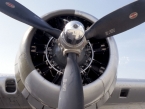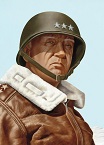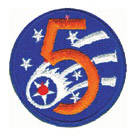wdolson
Posts: 10398
Joined: 6/28/2006
From: Near Portland, OR
Status: offline

|
quote:
ORIGINAL: PaxMondo
But truthfully, in this era, CV battles were a crap shoot at best. Looking at early war outcomes, getting into a CV battle generally meant both sides took a beating. This is based upon the '42 CV battles through Midway. Yes, IJ had the worst, but most unbiased assessments of each battle fought (meaning not Morison  generally conclude that a few minutes here, a couple of minutes there and outcomes change dramatically. Those razor thin margins are, I beleive, well modeled in the game. generally conclude that a few minutes here, a couple of minutes there and outcomes change dramatically. Those razor thin margins are, I beleive, well modeled in the game.
Point being, most air combat, and particularly naval air combat, had a lot of variable NOT controlled by the commanders. Weather being first, but FOW being right with it. Intel was far from perfect. Because of these two factors alone, coordination was measured in double digit minutes, not seconds like today. I think that, more than anything, is what many [younger] players struggle with. They have never been in a situation where absolute, total control was not possible. Products of the digital age, the whole concept of analog is just foreign.
Anyway, just thoughts of an analogue Neanderthal.
There is a book out in the Osprey Duel series that looks at all the CV battles of 1942. The USN doesn't stack up all that well. Strategically the USN won the day, the battles kept Port Morseby, Guadalcanal, and Midway in Allied hands, so on a strategic level the USN was victorious, but tactically, the USN essentially lost Coral Sea, the Eastern Solomons, and Santa Cruz.
At Coral Sea the US traded one CV sunk and another badly damaged for a small CVL sunk and one CV damaged. Both sides had very heavy air group losses.
The Eastern Solomons was the closet thing to a draw. The IJN lost a CVL they were using for bait in exchange for damage to the Enterprise.
At Santa Cruz the US lost a CV with another damaged badly enough to put it in the yards for a while and the Japanese had one CVL and one CV damaged.
The only time the US had a clear CV victory in 1942 was at Midway where blind luck put the SBDs in the right position at the right moment. Even at that, poor direction on the part of the air group commander from the Enterprise almost left the Akagi unscathed. If it hadn't been for some quick thinking on the part of Commander Best, the Akagi would have been spared.
Luck did play a major role. Better Japanese range, better training, and more experience also gave Japan an edge in those early battles. That had completely flipped by the carrier battles of 1944. The IJN air power was a shadow of what it once was and the US had most of the edges in numbers and quality. Even then the USN didn't manage to close the deal at the Battle of the Philippine Sea. That battle was probably the best example of a defensive battle for the USN. Fighter direction that day was near perfect. The largest carrier force in IJN history was only able to score one bomb hit on the South Dakota in exchange for staggering losses. Still the USN was not able to score much damage to the IJN ships and the carriers got away (except those picked off by subs).
This is a good page for the rundowns of various battles:
http://combinedfleet.com/battles/
quote:
OT: I was having a conversation at a picnic this past weekend with an MIT EE graduate (21 yo wunderkind) and we were talking about programming etc. He was expressing his disdain for any language except C#. When I told him my digital programming start with the 4004 and I was happy with any compiled language he looked at me with a blank look. Pretty sure he had no idea what the 4004 was nor that it was programmed with machine language only initially. Nothing else was available at that time.  I wonder what he would have done if I had told him about analogue computers that I programmed? I wonder what he would have done if I had told him about analogue computers that I programmed?   
C#? Really? That's a pretty narrow language to put all your energy into. As far as I know it is only supported by Visual Studio for Windows. It also needs .NET, which I really don't trust. It's gotten better, but a language that is completely dependent on an external library that can be changed at any time to do anything is going to have problems.
I prefer to program for long term reliability. It means I'll be spending less time down the road trying to figure out what I did 5 years ago. Which IMO is a good thing.
The first programming I ever did was machine code on the 6400. I went on to do embedded programming for about 15 years before teaching myself Windows programming. The good thing about programming a higher level programming language/OS is I don't need a lab to get my work done. I can write code at home, which is a good thing because I'm currently working for a company in California and I live in Washington State.
I never worked with the 4004, but I know what it is. I have heard it is still used in street light controllers, but I have never verified that.
Bill
_____________________________
WitP AE - Test team lead, programmer  |
 Printable Version
Printable Version






 generally conclude that a few minutes here, a couple of minutes there and outcomes change dramatically. Those razor thin margins are, I beleive, well modeled in the game.
generally conclude that a few minutes here, a couple of minutes there and outcomes change dramatically. Those razor thin margins are, I beleive, well modeled in the game. 














 way cool.
way cool.














 New Messages
New Messages No New Messages
No New Messages Hot Topic w/ New Messages
Hot Topic w/ New Messages Hot Topic w/o New Messages
Hot Topic w/o New Messages Locked w/ New Messages
Locked w/ New Messages Locked w/o New Messages
Locked w/o New Messages Post New Thread
Post New Thread